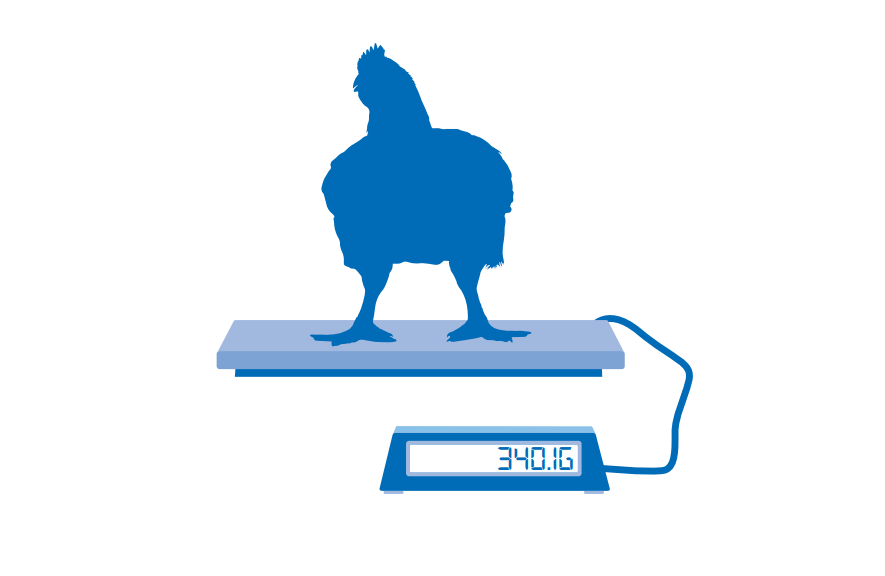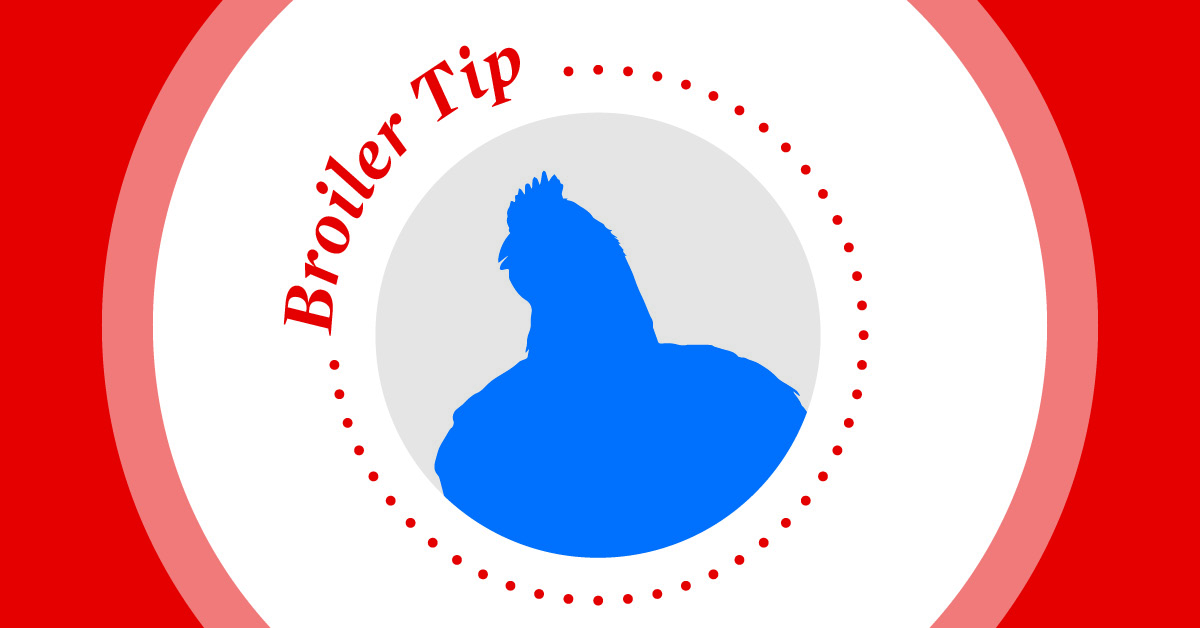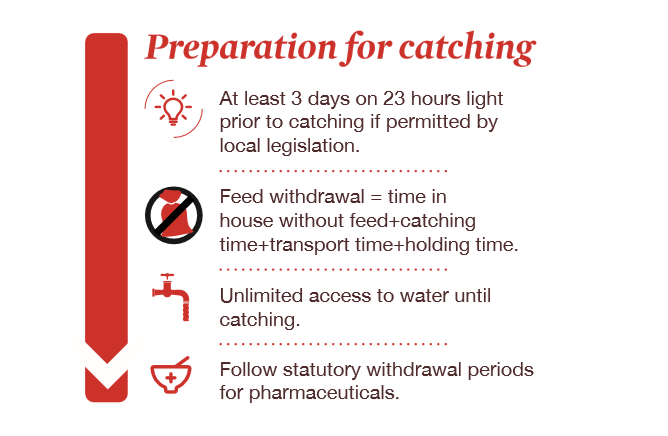



Flock management tip for broilers: Regular weighing to control final body weight
Part of Series:
< Previous Article in Series

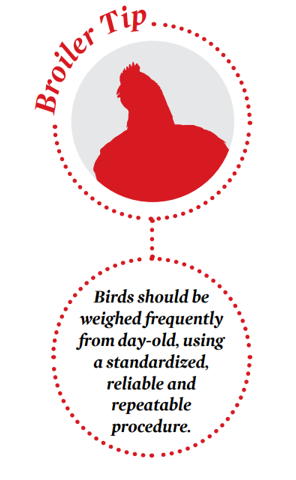
Accurate live weight and CV% determination are essential tools to predict broiler performance and ensure that processing weight-to-age targets are being met. Birds should be weighed at least once per week, and sample sizes large enough to be representative of the flock population. Increasing the frequency of weighing and sample size, especially closer to scheduled depletion, will provide more precise predictions of live weight and uniformity.
Regularly weighing broilers will:
- Assist in planning the correct age for processing
- Provide reliable and predictable growth management
- Ensure end product specifications are met as closely as possible
- Maximize profitability
Manual weighing
- Weigh birds at the same time of day, taking samples from at least 3 locations in the house or pen.
- Use dial type (to an accuracy of ±20 g) or electronic (to an accuracy of ± 1 g) scales, calibrated regularly for accuracy and repeatability.
- Between 0-21 days, weigh birds in bulk (average bird weight only).
- Individually weigh birds from 21-28 days onward, depending on age of processing (average bird weight and CV%).
- Weigh a minimum of 100 birds, or 1% of the population (whichever is greater) each time.
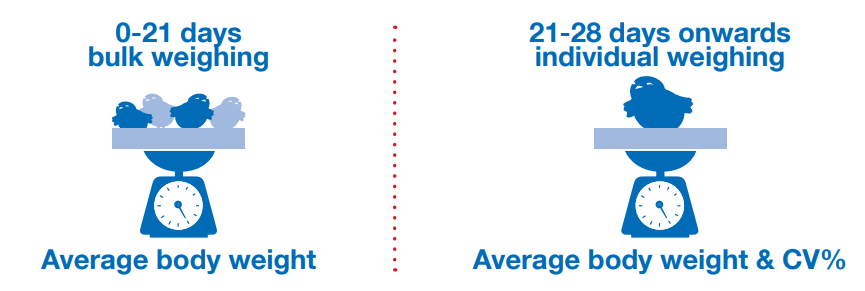
Automatic weighing
- Cross-check automatic weights by manual weighing at least once per week.
- Place automatic weighing systems where birds congregate and where individual birds will remain long enough for weights to be recorded.
- Large sample sizes are necessary for accurate live weight estimation.
